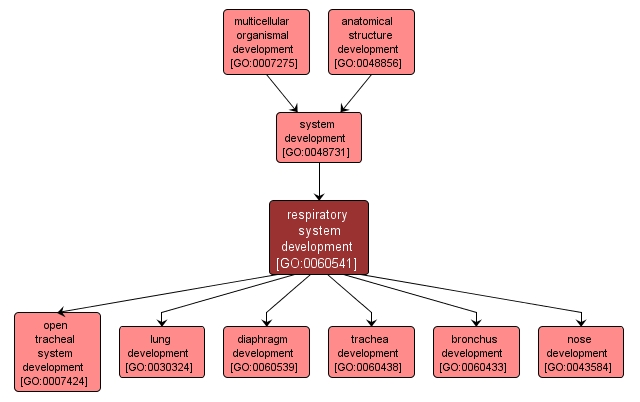GO TERM SUMMARY
|
| Name: |
respiratory system development |
| Acc: |
GO:0060541 |
| Aspect: |
Biological Process |
| Desc: |
The progression of the respiratory system over time from its formation to its mature structure. The respiratory system carries out respiratory gaseous exchange. |
|

|
INTERACTIVE GO GRAPH
|














